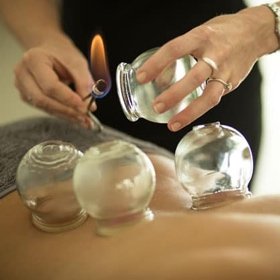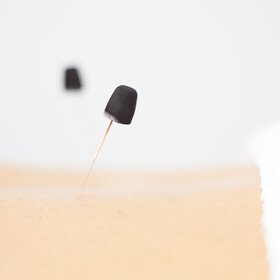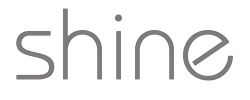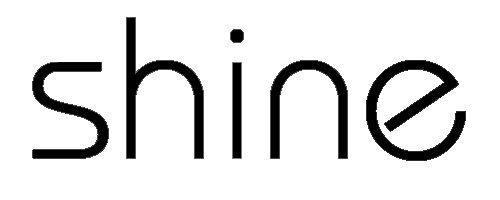
No one knows exactly when cupping first began. It was mentioned in the writing of Hippocrates and was known to be practised by the Greeks in the fourth century B.C. It was probably known and used by other nations as well. The earliest instrument used was a gourd. In the primitive regions of the world, cupping has been practised for thousands of years, and it can still be seen in these parts in its earliest form. The American Indians use the upper end of a buffalo horn about two and a half inches in length with a hole at the tip, through which a vacuum can be produced by suction and which can afterwards be plugged. The medicine men can make a very successful job of cupping for extracting the poison from snakebites and for relieving pain and cramp in the abdomen.
Cupping was widely used by most of the best physicians. Hippocrates seems to have used both, dry (cup drawn to the skin) and wet cupping (letting blood out with a cup put on the small cut in the skin), in the main to treat menstrual disorders. Avicenna preferred wet cupping, reserving dry cupping for cold swellings, and whenever cups were to be moved about in various places, he advised cupping as follows: to the nape of the neck in heaviness of the eyelids, each of the eyes, tremor of the head and lesions of the teeth, ears, nose, throat and face;….under the chin for toothache, sore throat and to cleanse the head and jaws;….between the shoulder-blades for pains in the upper arms and throat and to relax the cardiac orifice of the stomach;….over the loins for scabies, pustules, gout, piles, bladder, kidney and uterine lesions and for inflammatory masses in the upper part of the thi gh etc.
gh etc.
Cupping may be used by Massage therapists and Body Work Practitioners. Cupping is integrated to suit their particular technique. It can be used independently or in conjunction with acupuncture (while the needles are in position or following their removal), although cups are most frequently used alone.
During cupping, a therapist is putting a flammable substance such as alcohol, herbs, or paper into a cup and setting it alight. A cotton ball locked by surgical forceps and soaked in surgical spirit can also be used. As the fire goes out, the practitioner puts the cup upside down onto the skin. A vacuum is created through the burning of oxygen, which causes the skin to rise and redden as the blood vessels expand.
Where cupping is done for the first time, there will be nearly always be a bruise mark at the site of application, the degree of bruising depending on the strength of cupping. In any case it will fade away in a week or less. Summer holiday months are not the best time for cupping, as patients will not be pleased when having to explain unsightly bruises on exposed skin. When cupping is applied to the same area for a second time, bruises are far more reduced, and are even lighter at the third and any subsequent applications, until they disappear totally as the stagnation in the affected area disappears and the flow of blood and energy is regulated.
It is very safe for children over three years of age. The reason for this age limit is the fact that the skin of a child under three years old is very susceptible to blisters and bruises. Children generally prefer cupping to acupuncture, although some children are  petrified of fire, so extra care to relax them before treatment is needed.
petrified of fire, so extra care to relax them before treatment is needed.
Strong cupping is avoided on the abdomen and stomach. Cups are not applied over scaly or burned skin. During pregnancy cups are restricted to the abdominal or stomach regions, back points, especially the lower back. Otherwise cupping can be used with safety up to the seventh month of pregnancy.
The Eight Methods of Cupping (in the majority of cases the first 6 methods are used)
There are eight different methods of cupping: Weak, Medium, Strong, Moving, Needle Cupping, Moxa Cupping, Empty cupping, and Full (Wet) cupping.
- Weak Cupping: this is done with minimum suction, just enough to hold the cup in place. Cups are normally left for 10-20 minutes in adults and 2-5 minutes in children, but in weak cupping they can be kept in place for a longer period if needed. Weak cupping should not induce bruising or any sensation of pulling.
- Medium Cupping: the suction is firmer, and the skin rises just a little inside the cup. This method is suitable for children between seven and fourteen years of age. Medium cupping can also be applied to adults on the stomach and abdomen. Very little bruising will appear even if the cups are left for a long time.
- Strong Cupping: it is used on people who have experienced medium strength cupping previously, so that they know what to expect. Whenever strong cupping is used for the first time, it is advised not to leave the cups in place for more than 3-5 minutes, It is not suitable for children and weak or elderly patients. It causes bruising very rapidly and drains the energy if the cups are left for a long time. It is mainly applied on the back, shoulders and knees.
- Moving Cupping: the most painful method of cupping. This is done by moving the cups whilst they are in place on the skin. It is mostly used in excess heat conditions, and only on strong adults. Whether the suction applied is medium or strong, movement of the cups while in place will be uncomfortable to say the least. Before attempting the moving method, it is essential to make sure that enough oil has been used on the desired area. Rest is allowed between the sliding movements. The most common area of application is the back. The purpose of moving cupping is to draw out pathogenic heat and regulate the flow of blood. This will cause bruising very rapidly, which is the desired effect, indicating heat coming to the surface. It will be noticed that, as treatment progresses, less bruising will appear in subsequent sessions.
- Needle Cupping: cups can be applied over needles, whilst the needles are in the desired position. This method is used in excess conditions, e.g. red, painful and swollen knees and shoulders.
- Moxa Cupping: moxa (smoking dried mugwort herb) is placed on the needle in the normal way for warm-needle technique, and lit. As soon as the moxa has stopped smoking, and while it is still very hot, a cup is placed over the needle. This method is used for tonifying and moving the energy.
- Empty Cupping: this is actually a strong cupping method, but the duration of the suction is very short, i.e. less than one minute. This method is very effective when the effect of “drawing out cold” is desired, especially on weak patients, since it does not drain the energy excessively.
- Full (Wet) Cupping: In the 1830’s when antibiotics were unknown in England, this was the method used to draw out and eliminate poisons and infections from the body. The bleeding method is only used when excess ‘Blood-Heat’ is involved. A small cut is made – usually in the upper part of the body – and the cup is placed over the cut. The vacuum created will draw blood into the cup, which will fill rapidly. In Turkish folk medicine this bleeding method was used when a sudden rise in blood pressure endangered life. The bleeding method should be used with caution and not more than once a month. Not applied on children or patients with weak constitution. Careful sterile technique is essential both during and after the treatment.
References:
- Jarrett, L. S. (2003). The Clinical Practice of Chinese Medicine. Stockbridge, MA, USA: Spirit Path Press.
- Maciocia, G. (2005). The Foundantions of Chinese Medicine: A Comprehensive Text for Acupuncturists and Herbalists. Second Edition (2nd ed.). USA: Churchill Livingstone.
- JOURNAL OF CHINESE MEDICINE NUMBER 67 OCTOBER 2001: CLINICAL APPLICATION SLIDING CUPPING by Zhang Hong
- JOURNAL OF CHINESE MEDICINE NUMBER 37 SEPTEMBER 1991: PRACTICAL GUIDE T0 CUPPING THERAPY by Ilkay Chirali
- JOURNAL OF CHINESE MEDICINE NUMBER 21 MAY 1986: THE ANCIENT ART OF CUPPING By William Brockbank MA MD FRCP



